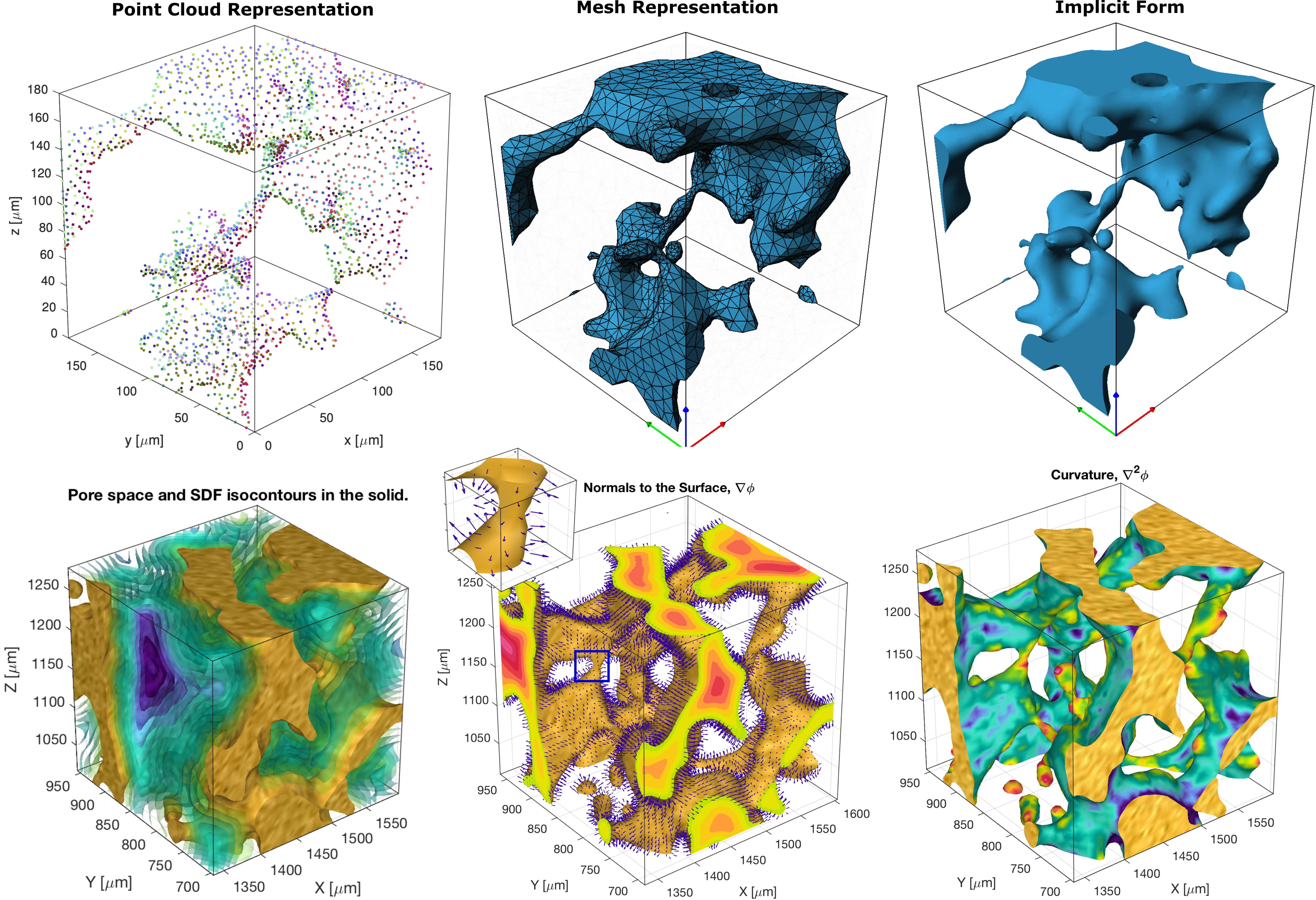
Geometric Processing of Porous Media
Geometrical processing of porous media, enables physical simulations never seen before, as well as expansion and compression of geometrical representations. Click here for simple meshes examples.

Geometrical processing of porous media, enables physical simulations never seen before, as well as expansion and compression of geometrical representations. Click here for simple meshes examples.

Coupled 3D multiphysics simulations, Click here for Video.
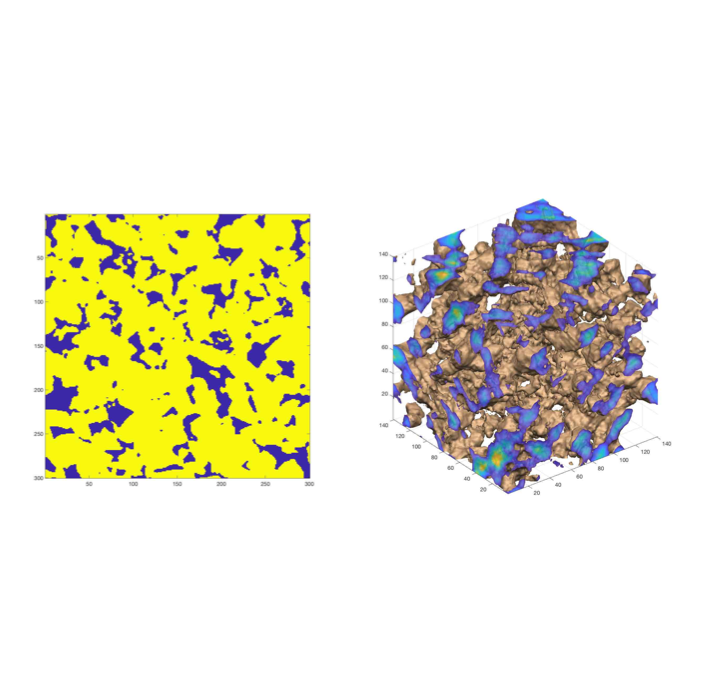
New mathematical theory in the geometry of porous media, which enables the creation of 3D geometries from 2D microscopies of rocks. The created geometries have equivalent physcial properties than the 2D counterparts. Equivalently, a full 3D geometry can be stored on a sigle 2D image, which is a factor of more than 1000x information compression.
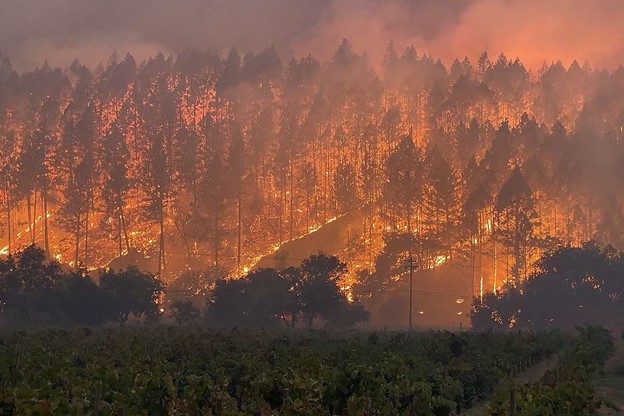
• Geospatial vegetation and climate data • Physical modeling of the fire's propagating front. • Modeling of thousands of fires scenarios with different location and ignition points.
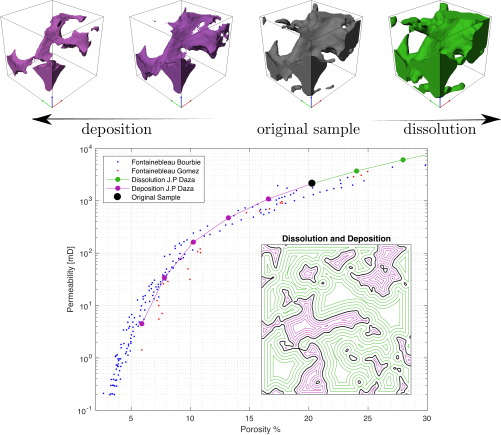
Calculate the changes in material properties as a function of Chemical and Physical processes.
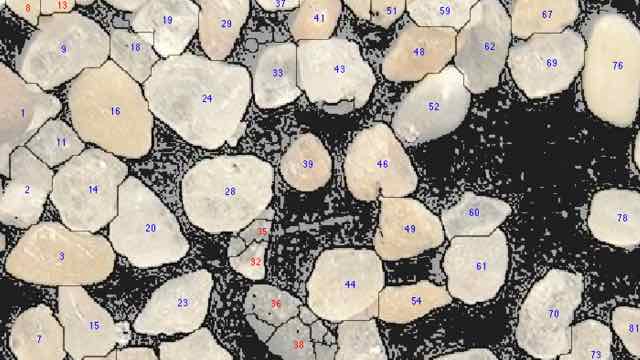
Created an automatic grain segmentation and geometry analysis algorithm for 2D images with a graphical user interface to select the ideal sand quarries as sources for hydraulic fracturing.
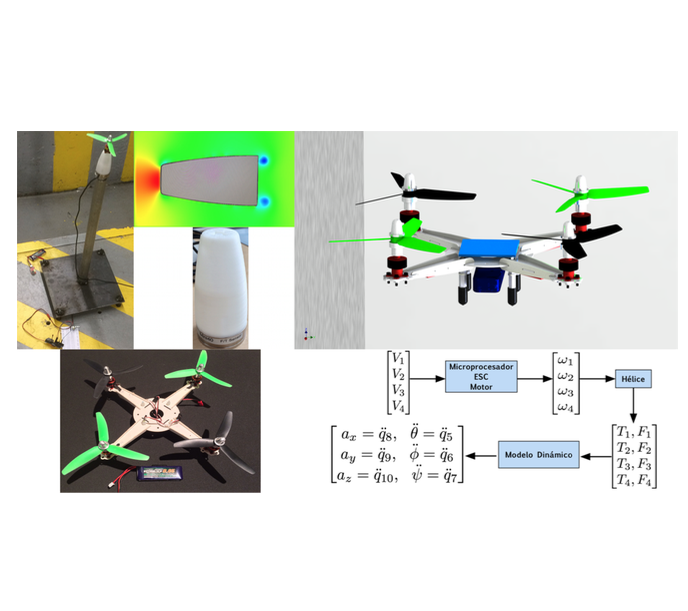
In this project, I wrote a complete dynamical model of a quadcopter using 3D dynamics and considering all components including the small propellers. By using a real quadcopter, I calibrated the model, by measuring and weighting each part of the real quadcopter and building a digital version of it, obtaining the inertial properties such as center of mass and the inertia tensors required for the theoretical model. Additionally, I measured the propeller force with a triaxial load cell to get the Force-Velocity curve of the propeller. With this model, I calibrated a flight controller to be able to fly the real quadcopter..
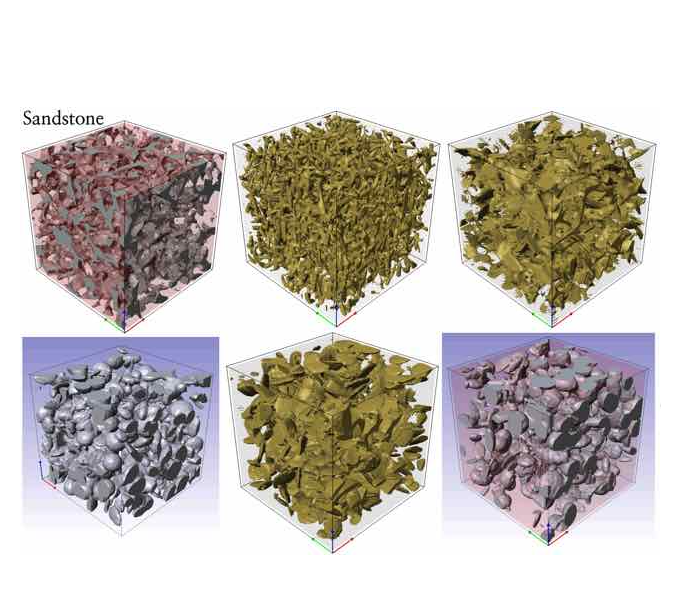
Simple theoretical models have been written to explain the bulk behavior of real rocks. However, this models are limited by their assumptions, and real rocks that span all the variety that this models explain, are hard to find, extract and study. I wrote an algorithm that generates complex and realistic artificial rocks, that enable the models and its assumptions to be tested.